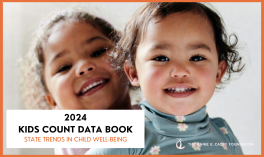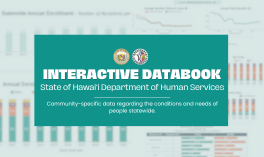America’s Health Rankings Annual Report 2022 has been released by the United Health Foundation in partnership with the American Public Health Association (APHA). This special edition provides a comprehensive overview of the impact of the COVID-19 pandemic and contains over 80 national and state-level measures from 2020 and 2021.
Here are some national highlights:
- The top 5 healthiest states were New Hampshire, Massachusetts, Vermont, Connecticut, and Hawaiʻi.
- The top 5 states with the most opportunity to improve were Louisiana, Mississippi, Arkansas, West Virginia, and Alabama.
- The nation experienced large increases in premature death rates during the first year of the pandemic. The years of potential life lost (YPLL) before age 75 by 100,000 population increased by 18%, from 7,337 in 2019 to 8,659 in 2020.
- In 2021, COVID-19 was the third-leading cause of death in the US. Provisional COVID-19 age-adjusted death rates were highest among Hawaiian/Pacific Islander (192.2 per 100,000 population), American Indian/Alaska Native (186.9), Hispanic (155.3), and Black (136.2) populations.
Additionally, the 2022 Annual Report: State Summaries features a ranking analysis for the 50 states across five categories of health: social and economic factors, physical environment, behaviors, clinical care, and health outcomes.
Overall, the state of Hawaiʻi ranked #4 in the nation. By category, Hawaiʻi also ranked:
- #1 in Health Outcomes: This includes indicators for behavioral health, mortality, and physical health. For example, 5.6% of people ages 18+ reported having multiple chronic conditions compared to 9.6% nationally.
- #5 in Clinical Care. This includes access to care, preventative clinical services, and quality of care. For example, 74.7% of people ages 18+ said they visited a dentist in the past year, compared to 66.7% nationally.
- #9 in Social and Economic factors. This includes indicators for community and family safety, economic resources, education, and social support and engagement. For example, 9.1% of households are food insecure, compared to 10.4% nationally.
- #15 in Behaviors. This includes indicators for nutrition and physical activity, sexual health, sleep health, and smoking and tobacco use. For example, 7.3% of people ages 18+ reported using e-cigarettes, compared to 6.7% nationally.
- #28 in Physical Environment. This includes indicators for air and water quality and housing and transit. For example, 65.3% of people reported driving alone to work, compared to 67.8% nationally.
- Overall strengths include a low prevalence of frequent mental distress (10.7%), a low prevalence of multiple chronic conditions (5.6%), and a low prevalence of physical inactivity (20.0%).
- Overall challenges include a high prevalence of excessive drinking (18.2%), a high economic hardship index score (81/100), and a low supply of primary care providers (253.6 per 100,000 population).
View the 2022 Annual Report and the 2022 Annual Report: State Summaries.




